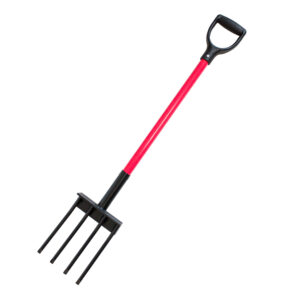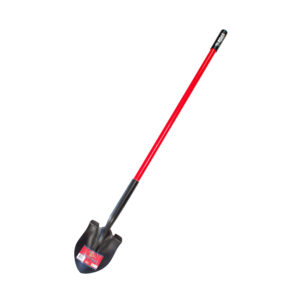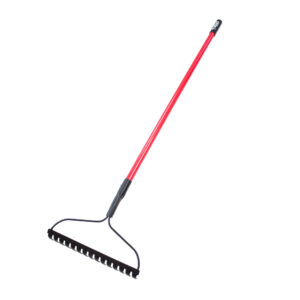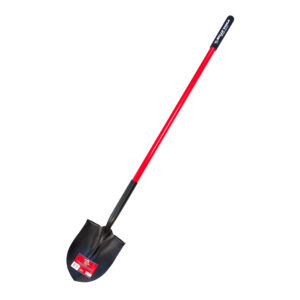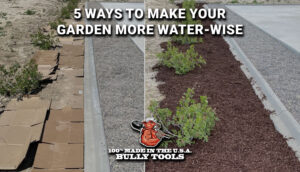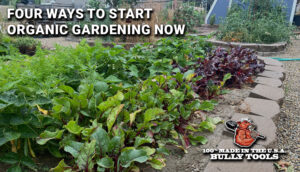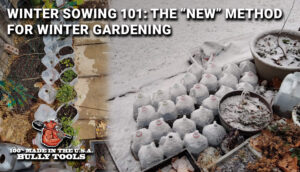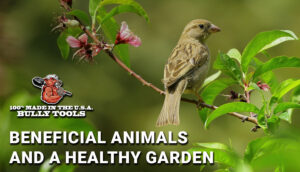Dividing and Transplanting Established Perennials
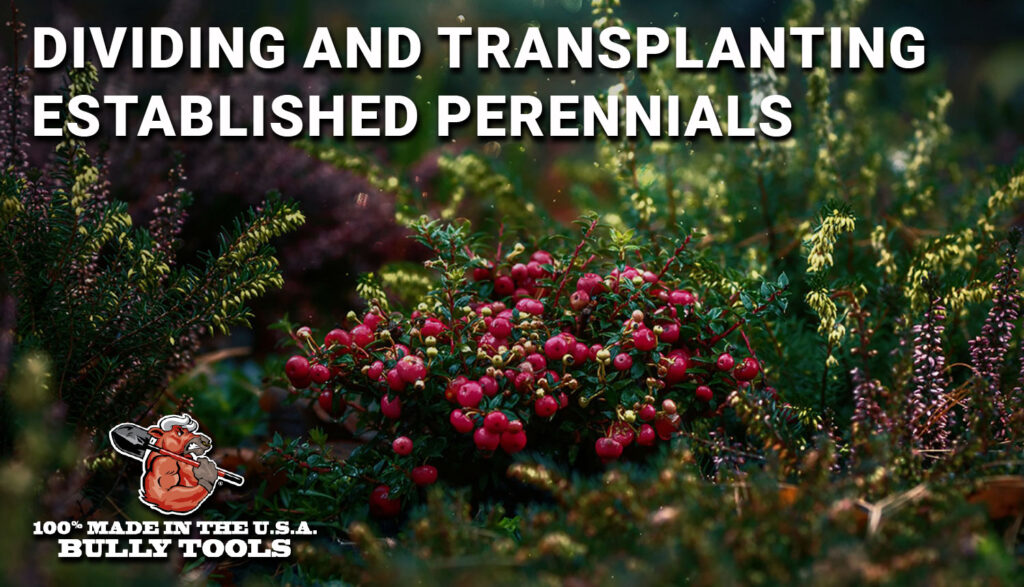
Most perennials never stop growing and spreading, unfortunately, a gardener’s flowerbed size is usually limited. When a perennial grows too large for its space or is flopping or otherwise suffering, it’s time to divide and transplant. It’s typical for perennials to need to be divided every 3-5 years, with some plants requiring it for better health and more blooms. However, some plants do divide easier than others. Gas plant (Dictamnus albus), for instance, does not tolerate division very well, and of course perennials with a tap root like lavender, false indigo (baptisia), baby’s breath, Oriental poppies, and Russian sage cannot be divided. Fortunately, other perennials like daylily, salvia, sedum, iris, coneflower, black-eyed susan, yarrow, hosta, shasta daisy, catmint, and most grasses, do best when they are divided every few years.
Dividing and transplanting your perennials doesn’t have to be overwhelming. Here we’ll show you the steps to help simplify the process.
1. Gather the right tools
There are a few basic tools and supplies you need to help make your division and transplanting process easier:
- A spading fork, shovel, or floral spade
- A container to transport root balls such as a trug, bucket, or wheelbarrow
- Pruners or a knife—a hori hori knife is indispensable because of its sharp/serrated side and digging point
- A gentle fertilizer like compost or Espoma Biotone Starter to help new transplants create a strong root system and recover faster
- A water supply
2. Identify the plant to be divided
There are a few signs to help you know when a plant is ready to be divided:
- The root ball has more than doubled in size
- It flowers less than the previous year (crowding leads to fewer flowers)
- The interior of grass clumps have died out
- A perennial has flopped open to expose the center
Perennials that are overcrowded compete for nutrients and water and don’t perform as well. The stress from overcrowding can also promote disease (because of reduced air flow) and makes them less resistant to insect damage. Dividing a plant can rejuvenate it and stimulate new growth. Dividing perennials also helps you to control the size of the plant so it better fits in your landscape.
The best reason, however, is that dividing overgrown perennials means you get more plants for free!
Here are a few examples of perennials ready to be divided: This salvia (left) and daylily (right) are both ready to be divided. The salvia has grown large and is open in the middle. The middle of the daylily is struggling because it’s overcrowded and it’s in the way of the lawn trimmer, which means the tubers closest to the edging need to be removed, which will open up the center of the plant.
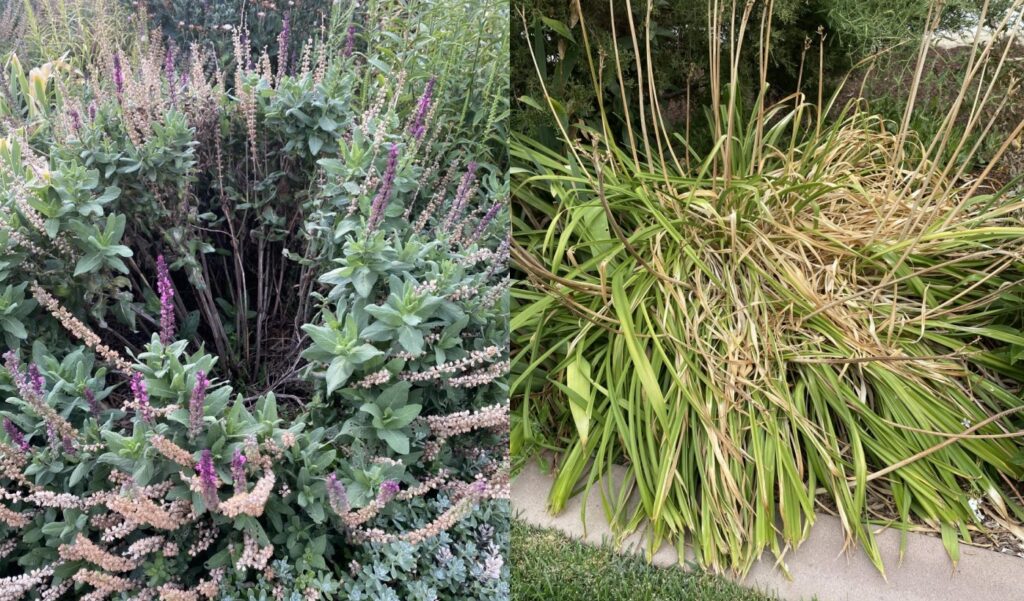
This dwarf iris has become too crowded. The close-up on the right shows how tight the tubers have grown next to each other. This past spring, the bloom rate was half what it should be, so it’s ready to be lifted and thinned. Extra tubers can be re-planted elsewhere.
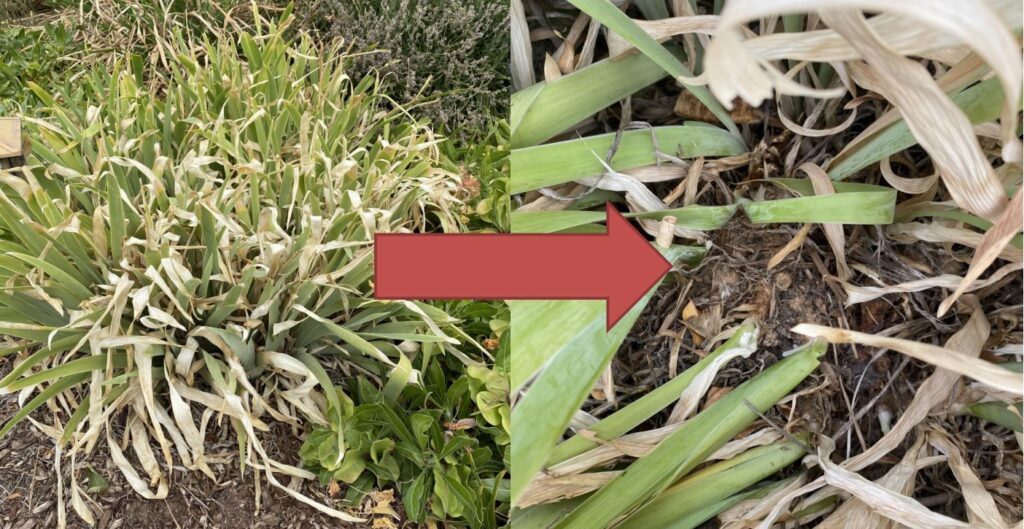
3. Know the best time to divide
Many hardy perennials like salvia, daylily, iris, phlox, sedum, coreopsis, and others can be divided any time as long as you baby them after planting, especially if the weather has been dry and hot. Unfortunately, transplanting right before or during blooming will affect that season’s blooms, but that won’t kill the plant if it must be done.
The general rule of thumb for when to divide most perennials is:
Divide fall blooming in the spring, and divide spring blooming in the fall
- Fall blooming are best divided in the spring because it causes less damage while they’re still just breaking dormancy. The new growth is easy to find and the stored energy in the roots will help them to better recover. The cooler temperatures and spring rain help the disturbed roots establish in the new location quicker.
- Spring/summer blooming perennials are best divided in the fall because they will have the winter to recover and establish their roots for better growth and still be able to flower the following spring. For fleshy root perennials plants such as peony you can see the stems, making it easier to find and divide, and it’s less disruptive to new spring growth (since they die to the ground); peonies divided in the spring don’t often bloom and take the rest of the year to recover.
Important: If dividing in the fall, make sure to complete the planting 4–6 weeks before the ground freezes. This is different than the first frost date. It depends on soil type and the amount of water in the soil, but generally the ground freezes after about a week of subfreezing temperatures. If you’re familiar with your garden, you can guess based on last year’s freezing period.
If you aren’t sure, it’s worth Googling or finding a Master Gardener program near you to help you determine the best timing for your location and for the particular plant.
4. Know where you want to put the new divisions
Before you dig up and divide a plant, give it the best chance of survival by planning ahead of time what you’re going to do with the extra divisions. The sooner you can plant the division or transplant, the better and faster they’ll recover.
Do you know what you plan to do with extra plants? The following questions and answers should help you figure out your next step:
- Do you have a place in your yard for it? If yes, prep the new area before you dig up your plant so you can immediately put it in the ground.
- Are you going to compost it? If you are and won’t want the seeds to mix into your compost to germinate later, make sure to discard any seed heads. Make sure the plants have no disease or herbicide damage (learn more about composting here).
- Don’t have room for it? If this is the case, it’s easy to post on online community pages to give away extras, or neighbors and friends are often happy to have them. Consider looking up local gardening groups or Master Gardener associations who can use them for fundraisers or who are looking for plants for charity gardens or local schools. You can contact your local county Agriculture Extension office for community garden groups in your area who may need plants.
- Need to keep them to plant another time? Many plants that are easy to divide can be kept in pots until they’re ready to be planted later. Many will successfully overwinter in a garage where they can be protected from cold temperatures. Potted perennials left outside need to be cold hardy to 2 zones higher than where they’re potted. For example, if you live in zone 6, the plant needs to be hardy to zone 4 to safely overwinter in a pot. Plant tags will list the zone or you can look it up online.
Remember that some plants simply do better in the ground than in pots (peonies, for example) so if they’re suffering in a pot, have a plan, even if it means planting it in a temporary location.
5. Dig, divide, plant, and water
Now that you’ve gathered your tools, you know what plant needs to be divided, and you know what you’re doing with the extras, then you’re ready to begin digging.
A. Water the area beforehand, such as the night before, to soften the soil and make it easier to work with.
B. Using a shovel or spading fork, move dirt from around the outside of the plant’s root ball. You can remove the root ball completely from the ground or divide it while still in the ground.
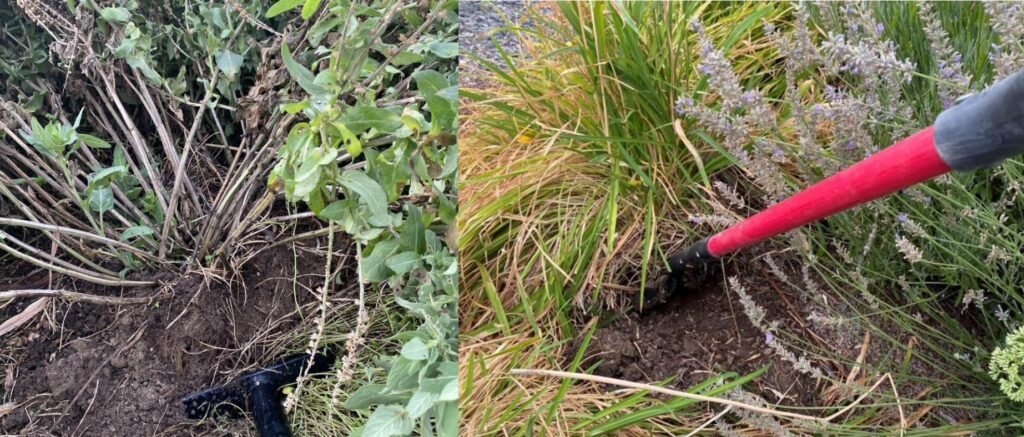
C. Divide by pulling the tubers/roots apart or cutting the roots apart using a garden spade, shovel, pruners, or knife (here the salvia’s woody roots are cut into sections to be moved and re-planted).
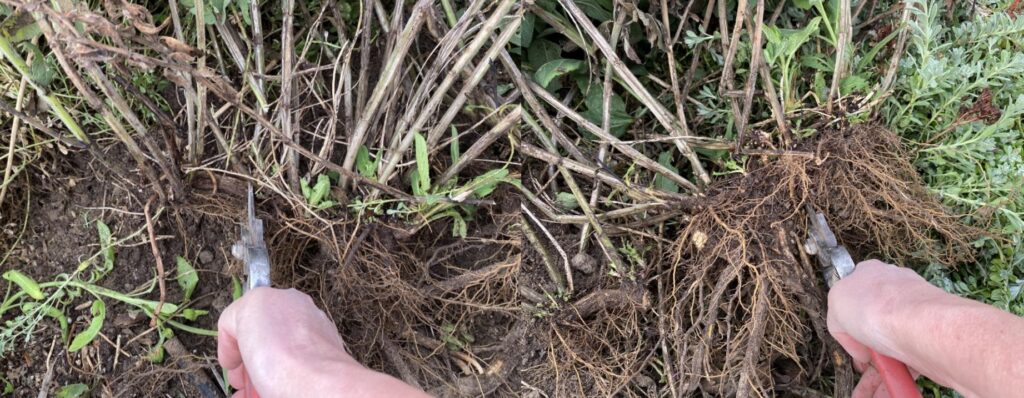
D. Separate the roots—using a knife, spading fork, or your hands—to make the new division.
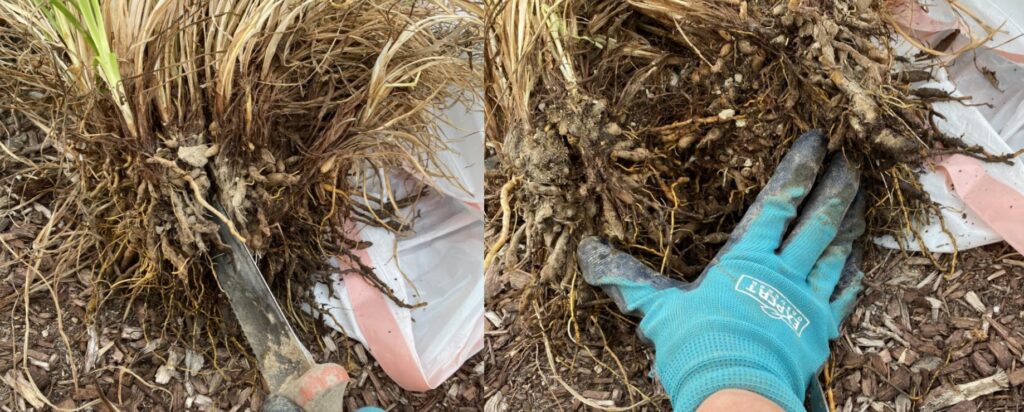
E. For bulbs, set a spading fork outside the bulb area to avoid cutting or puncturing any bulbs, lever with your tool, then lift from the ground.

F. Assuming you’ve prepared the new location, plant the football/tubers/bulbs, add compost or fertilizer if you have it, and replace the soil around the base, pressing the soil down firmly around the roots.
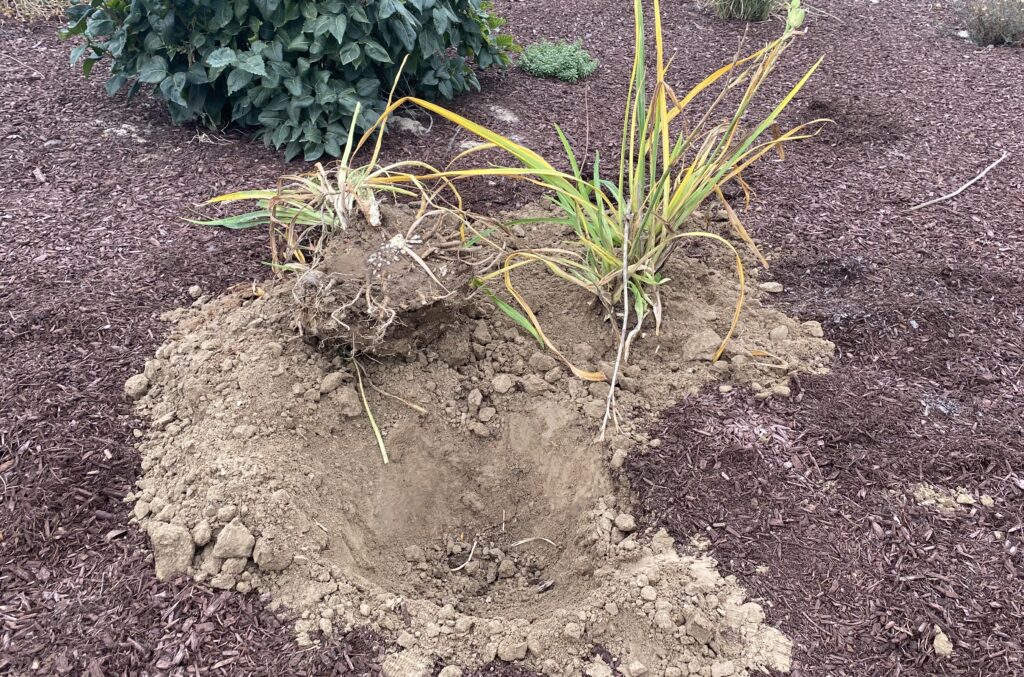
G. Water generously for several days to make sure it recovers from the disturbance. Spring bulbs replanted in fall, such as daffodils or alliums, don’t need watering.
H. Cut back dying leaves or old blooms to about 10” or as needed so the roots can focus on getting established.
Dividing perennials to expand your garden
Gardening can be an expensive hobby, but there are ways to do it economically, such as getting starts from friends and neighbors and dividing your own thriving perennials. Expanding perennial gardens are worth the effort in their own right because they are beneficial for pollinators, birds, and other wildlife. But beyond that, when you create a full, thriving garden full of beauty, you share its benefits with everyone who sees it.


